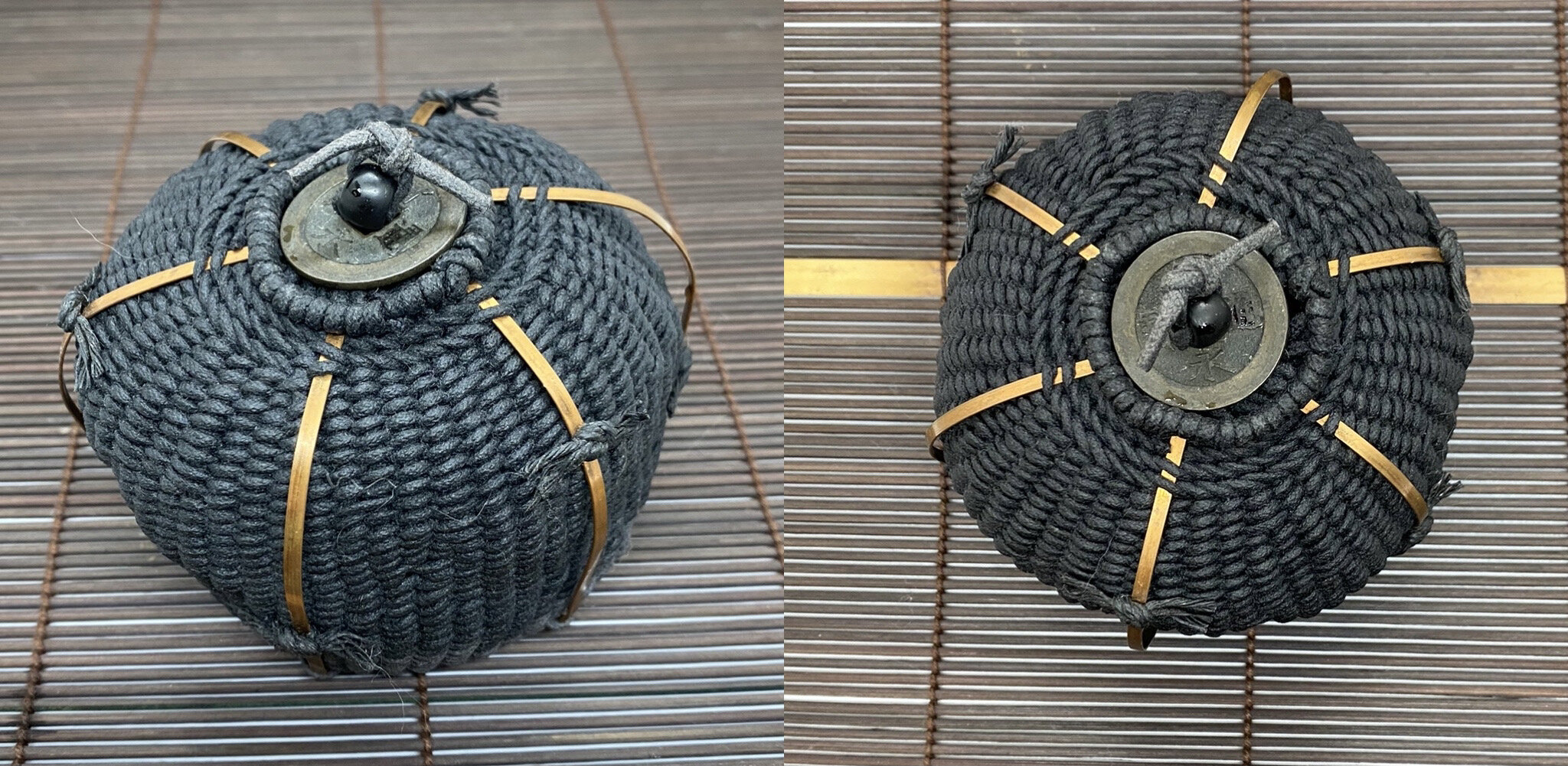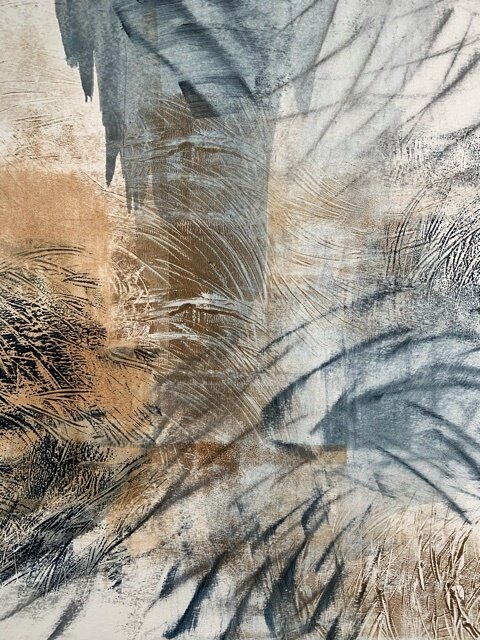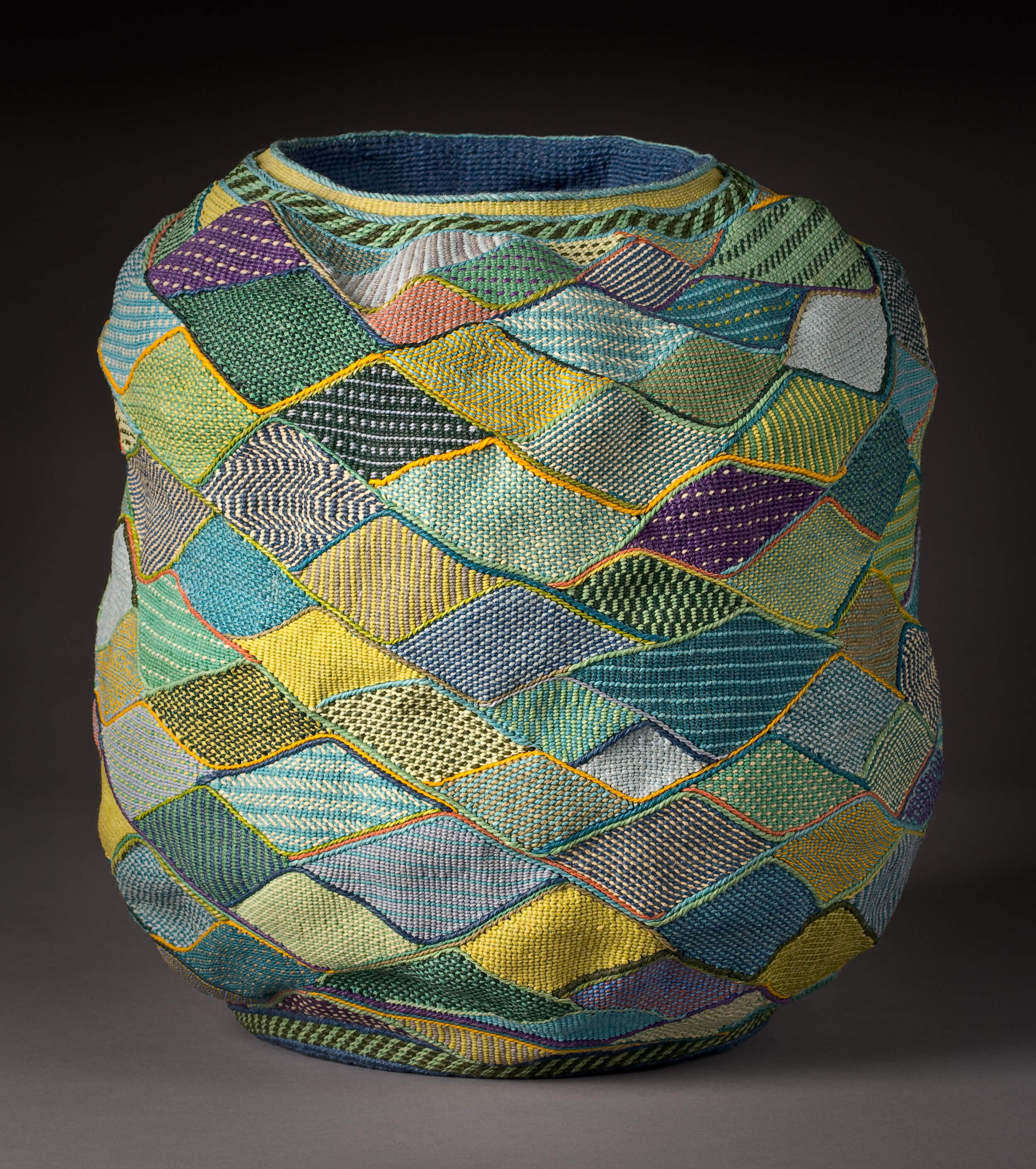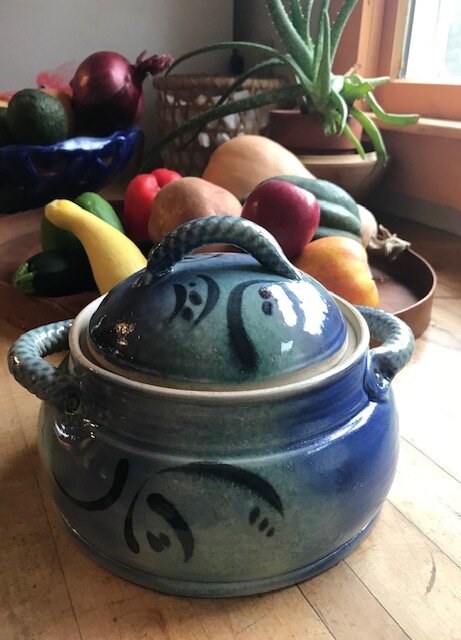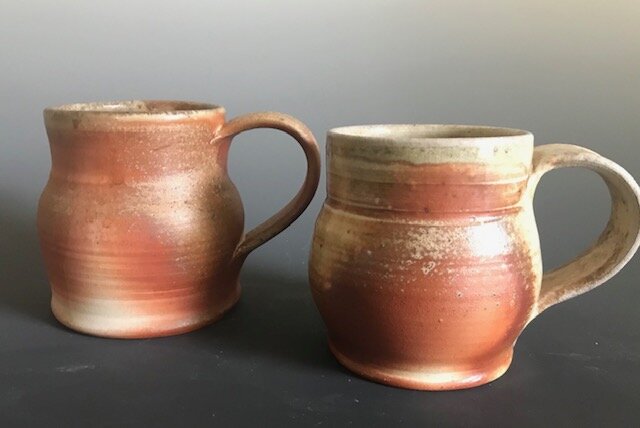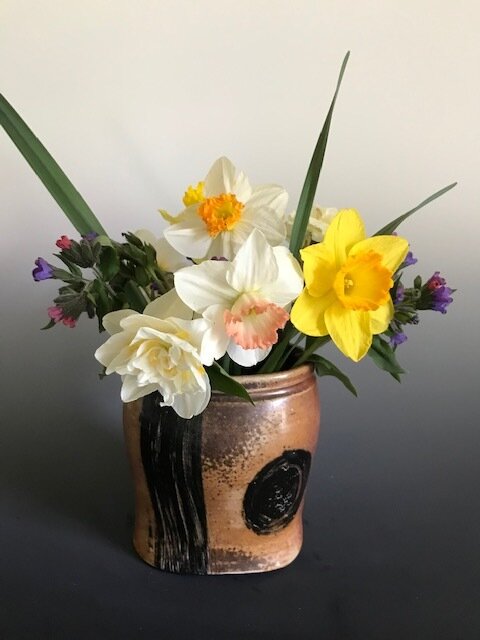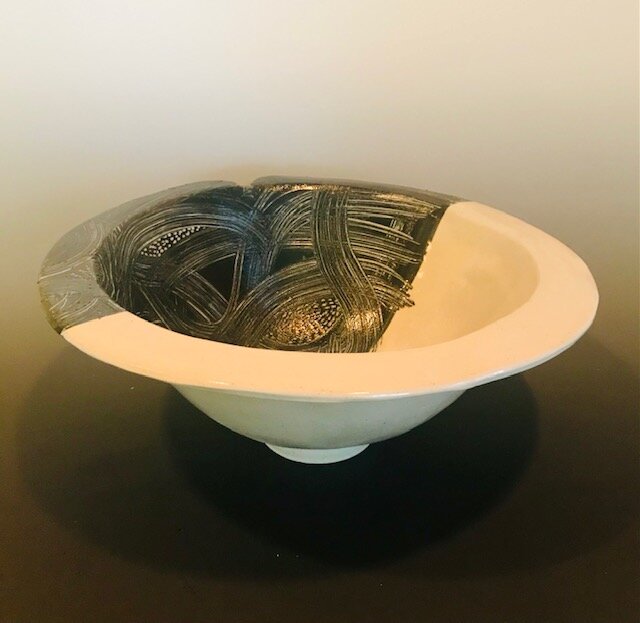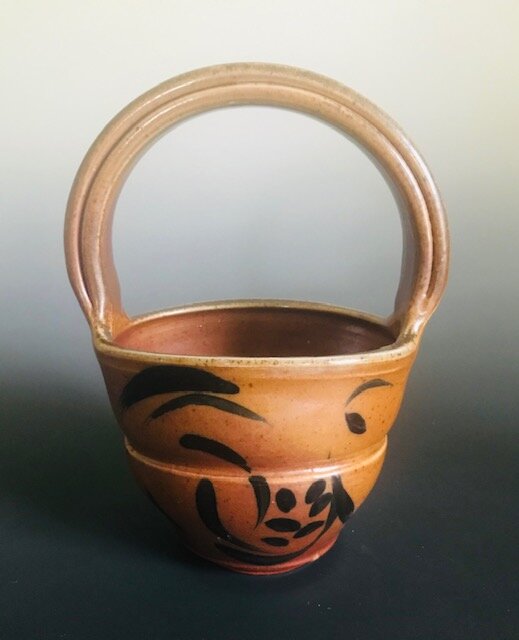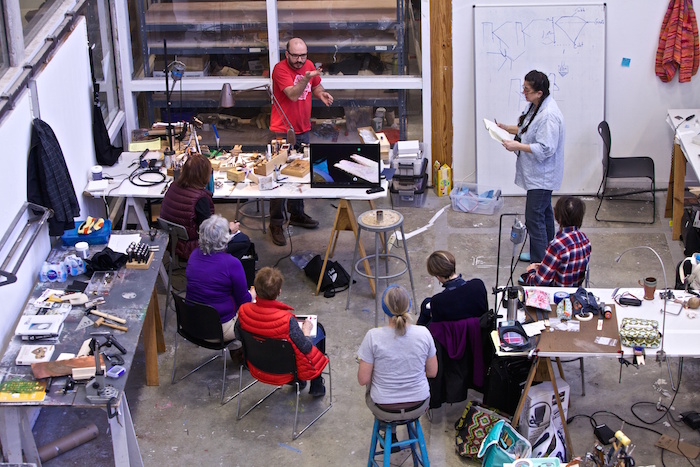From There To Here...
/Twenty years ago, my friend Joanne Wise (NCSW’s Executive Director at the time) encouraged me to attend. “But, I’m not a craft artist.”
“Maybe not, but you’ve spent your career in design.”
And, so it began…
January 2001:Basketry - Twined Japanese Inspired Baskets, Nancy Moore Bess
Having just come home from my brother’s memorial service, this turned out to be the perfect antidote requiring intense focus using a new material (black waxed linen) and a new technique. One of my friends dropped by periodically and asked “Are you still working on that?”
My mathematical mind kept wanting to know exactly when to increase or decrease in order to create a shape. Nancy said “You’ll know.” She provided not only the teaching support expected, but also emotional support, not expected. I learned twining and I gained a friend.
I have been involved in the Planning Committee as Board President, Graphic Designer, and Database advocate. And I have taken a workshop every time: Book Arts with Daniel Essig, Polymer Clay with Kathleen Dustin, Basketry with Kari Lonning, just to name a few. What Board rewards your volunteer work with the opportunity to spend five days making art in a workshop, whose amazing faculty you have a hand in picking, while hanging out with women who have become your best girlfriends?
January 2018:Basketry - New Uses for Ancient Techniques, Lois Russell
I was determined to focus on twining! I like squares. I like black with accent colors. When I told Lois about my plan, she grinned and said “You might want to reconsider your decisions.” But I was stubborn. I got off to a good start during the class although I soon understood Lois’s caution. Moving to a new city, however, intervened and it wasn’t until leisure time on a river cruise (with Lois among the passengers) ten months later that I picked it up again and VOILA!
I was hooked!
March 2020: COVID! What do you turn to when you have no choice but to hibernate for 13 months during a pandemic? What materials do you have that you can bring out (and justify binge watching TV)? Remember how much you love the feeling of waxed linen and the delicious range of colors? Get going!
May 2021:The latest collection. “It Takes a Village” based on the painted architecture of the Kassena women in the village of Tiébélé, Burkina Faso, West Africa.
It helps to have a sweater design background that makes using graph paper easy; it also takes the guess work out of shape building.
See what NCSW can do?! Come join us in 2023.
(Does this mean I’m a craft artist now?)
By Polly Allen, Co-President NCSW Board of Directors


